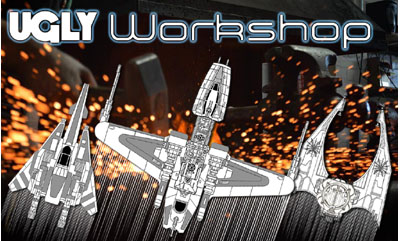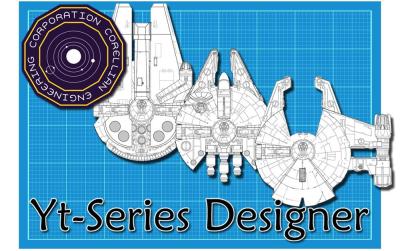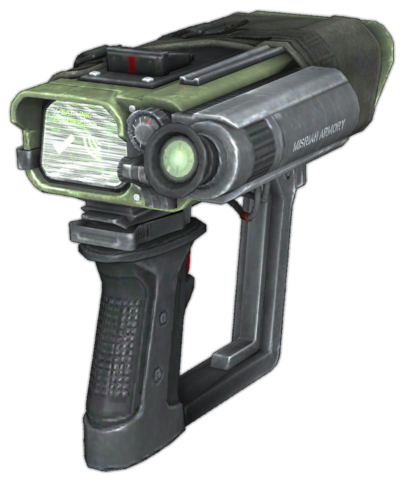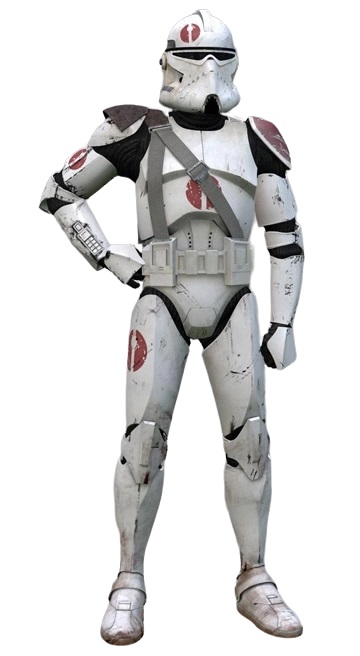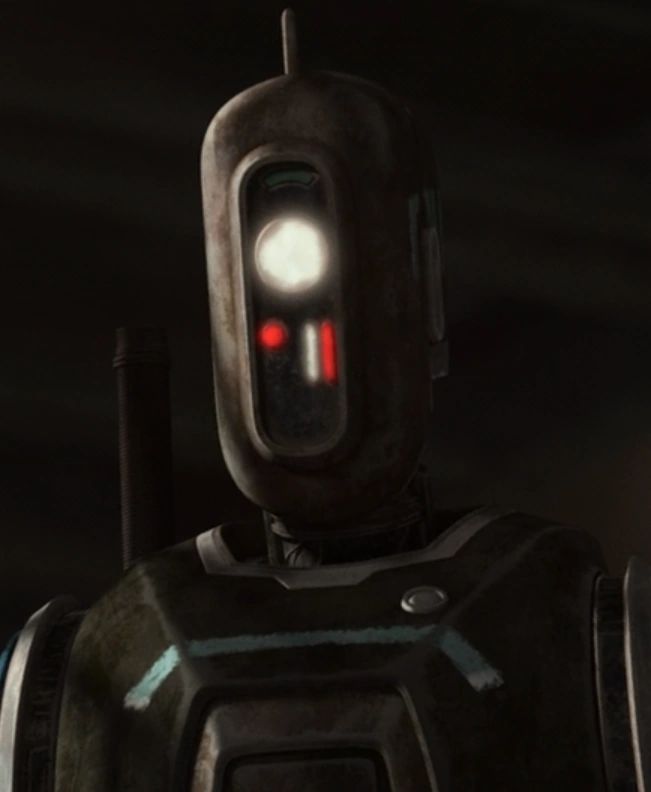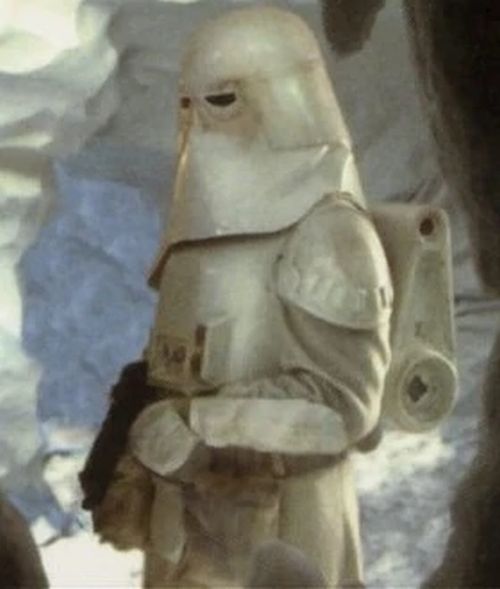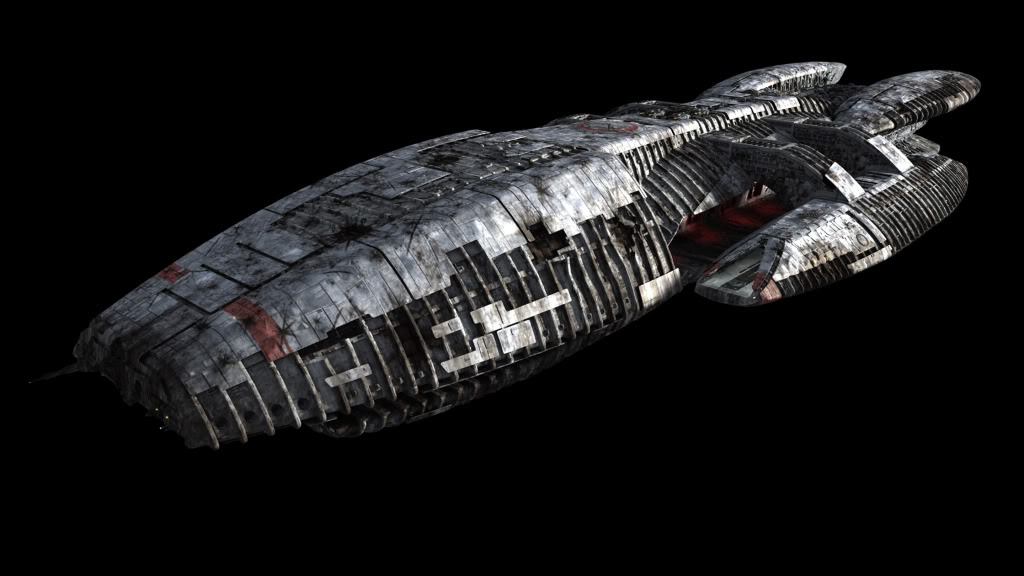 THE GALACTICA (Reimagined Series)
Craft: Battlestar Galactica (BSG-75)
Type: Colonial war-era battlestar class
Scale: Capital
Dimensions:
-Length: 1438.64m (4720ft)
-Width: 536.84m (1762ft)
-Height: 183.32m (602ft)
Skill: Capital ship piloting: battlestar
Crew: 3,500 (approximate)
-Gunners: 1,124
-Troops: 500
-Skeleton: 800/+10
Crew Skill: Astrogation 8D+1, capital ship piloting 8D, capital ship
gunnery 7D, sensors 6D, starship gunnery 7D
Passengers: 100 (roughly standard; can carry hundreds more in
emergencies)
Cargo Capacity: 50,000 metric tons
Consumables: 5 years
Cost: N/A
FTL Capable: Yes (Colonial, see below)
Nav Computer: Yes
Maneuverability: +2
Speed:
-Space: 6
Hull: 8D
Defenses:
-Ablative Armor: 1D+1 (see below)
-Reactive Armor: 1D+1 (see below)
-Shields: N/A
Sensors:
Passive: 50/1D
Scan: 100/2D
Search: 200/3D
Focus: 5/3D+2
SHIPS:
-Vipers: 20/40
-Raptors: 5/30
-Shuttles: 6
WEAPONS:
24 Primary Dual Kinetic Energy Weapons
Location: Scattered about the hull
Fire Arc:
-4 right/front/left
-2 front/right
-2 front/left
-16 turrets
Crew: 4
Skill: Capital ship gunnery
Scale: Capital
Fire Control: 3D
Space Range: 3-12/25/50
Damage:
-Flak Rounds: 6D (Blast Radius: 6D/5D/4D)
-High-Explosive Rounds: 8D+2
Ammo: 200 (reloadable magazines)
Rate of Fire: Up to 2
514 Dual Point-Defense Kinetic Energy Weapons
Location: Scattered about the hull
Fire Arc:
-80 front
-100 right
-100 left
-40 rear
-194 turrets
Crew: 2
Skill: Starship gunnery
Scale: Starfighter
Fire Control: 3D
Space Range: 1-3/12/24
Atmosphere Range: 50-300/1.2/2.4km
Damage:
-Flak Rounds: 5D (Blast Radius: 5D/4D)
-High-Explosive Rounds: 6D+2
Ammo: 1,000 (reloadable magazines)
Rate of Fire: Up to 2
12 Missile Launch Tubes
Location: Mounted in the forward hull
Fire Arc: "turret"
Crew: 1 (bridge crew)
Skill: Capital ship gunnery
Scale: Capital
Fire Control: 2D+2
Space Range: 1/3/7
Atmosphere Range: 100/300/700
Damage: Varies by warhead type
-Conventional: 9D
-Nuclear: 10D (Blast Radius: 10D/9D/8D/7D)
Ammo:
-Conventional: 10 per tube (x4 in storage)
-Nuclear: 5 to 7 (varies, see below)
Rate of Fire: 1 (takes 1 full round to reload each tube)
DESCRIPTION:
Galactica (BSG-75) is a veteran battlestar and the last of her kind
still in service with the Colonial Fleet at the time of the
destruction of the Twelve Colonies. Built during the early days of the
Cylon War, she remains the only military vessel without integrated
computer networks. Without networked computers, Galactica never
upgrades to the new integrated defense system software developed by
Dr. Gaius Baltar and his team. Because of this and other factors, she
becomes one of only two known battlestars (the other being Pegasus) to
survive the renewed Cylon attack on the Twelve Colonies. At the time
of this attack, she was part of the 75th Battlestar Group (BSG-75).
----------------------------------------
GAME NOTES
Before getting into the in-depth specifics of the Galactica, I
wanted to take a moment to explain some key game rule material I've
added to her for the purposes of gameplay. A while back, I did up
some stats for the Andromeda, a mighty ship in its own right from a
series of the same name. This ship had no actual 'shields' like in
Star Wars, but it did have many different defensive systems that
nevertheless gave it amazing survivability, even when the odds were
vastly against it. I have adapted a couple of those systems here for
the Galactica (and probably any future vessels related to it), to
reflect how it relied on sheer bulk and heavy armor to defend it
against the massive amounts of damage it soaked from many battles
against the Cylons.
ARMOR:
-Ablative Armor: The hull is designed to deflect incoming weapons fire away from it when it connects with the outer surface. Enemy shots lose 1D+1 of Fire Control to land a hit on this ship's hull. If the Reactive Armor (below) loses pips or dice to damage inflicted upon the ship, then the Ablative Armor loses the same amount, as these are both built together into the ship's hull.
-Reactive Armor: The hull is designed to 'react' to incoming hits when
they connect, blowing specially designed panels of itself off to keep
damage from scoring deep into the ship. When a damaging hit is scored
against this ship, instead of taking what is rolled on the Starship
Damage Chart, it can instead reduce it's Hull Dice by one 'pip' per
category of damage rolled on the chart (1 for Light Damage; 2 for
Heavily damaged; 1D for Severly Damaged; 1D+1 for Destroyed; +1 pip
for every 5 rolled past Destroyed result). It can do this for a
maximum of 1D+1, then takes damage as normal.
NOTE: The Galactica also seems to be missing many panels of its armor
since day one of the Fall of the Twelve Colonies, and later iterations
(such as "Razor") show other vessels of her class with more armor
during the original Cylon War when these battlestars were first
introduced. The Galactica lists above as having 1D+1 in each of these
"defensive systems", but if it or similar ships like it have their full
plating, then these would be 2D, or perhaps even more. Also of note, the Galactica takes on more and more damage throughout the re-imagined series, later shown to have deep scars and wounds in its hull that could not be fully repaired during the Fleet's travels. Therefor, the Armor Defensive Systems may have lost even more from the 1D+1 it initially had, if not having lost all of it over the course of time.
NUCLEAR WARHEADS: The Galactica's missile launchers are nuclear-capable, though the exact amount of nukes she ever had was unknown. These are the most powerful weapons in the arsenals of most ships in Battlestar Galactica. Aside from packing major damage (10D!), they also have an adjustable blast radius (up to 10D/9D/8D/7D) like grenades and other explosives, though the range is in space units (Space Speed 1, or 100m per space unit) instead of meters. They also have an EMP effect (electromagnetic pulse) that works like ion weaponry from the Star Wars setting. The rules for this work just like ion weapons do in the WEG Star Wars RPG rulebook, except that it's a blast radius affect. The nuclear blast damage is also adjustable and can have less blast radius AND/OR damage (to a minimum of 10D/9D radius and/or 7D damage), and the EMP effect area is equal to the blast radius +2 space units, and has the same damage strength. The ability to adjust the stats of these missiles is similar to current nuclear weapons technology, as they may be adjusted to take out a hardened target, while trying to preserve surrounding terrain or allied forces. Like using flak rounds in the KEWs, nukes may be fired first to destroy or weaken a target, then sending in fighter craft after the initial impact.
KINETIC ENERGY WEAPONS (KEWs): These are the Galactica's main weapons,
powerful guns that use highly advanced technology to produce effects
similar to older firearms and cannons, but with much more deveatating
effect befitting a large spacecraft like a battlestar. They can fire
different forms of ammunition, such as high-explosive for penetration,
or flak rounds for airbursting purposes like saturation fire to take
out incoming fighters or cause havoc along the hulls of other capital
ships. These guns come in two types; the main guns used for capital
scale combat, and the lighter versions used against smaller craft.
The Galactica has been seen on multiple occassions using these weapons
in tactical engagements, including saturation fire where it's guns
choose a direction (fire arc) and saturate it with flak rounds. This
is preferably used when enemy fighters are coming in from a specific
direction. The sensor operators give firing solutions to the gunnery
crews, who adjust their aim and open up with their guns. This makes
the entire fire arc deadly to pass through, even to Galactica's own
fighters, who are ordered to steer clear from the affected area to either take out fighters that are not taken out by the saturation fire, or are engaging the enemy capital ship itself.
-Saturation Fire: A Sensors roll of the range Difficulty Level is needed, made before the guns fire. The weapons then open up on the desired fire arc with all guns, saturating the arc with flak rounds. Any space craft caught in the affected fire arc must roll against that range's Difficulty every round while they fly through it under fire. The Difficulty is Difficult at long range, Very Difficult at medium range, and Heroic at short range. Failure means they take fire and are hit (GM's discretion on how to work out damage!).
IMMUNITY TO ELECTRONIC ATTACK: The Galactica is a Colonial War-Era battlestar, one of the first twelve ever produced. They were made with none-networked computer systems which make the Cylon's wireless hacking abilities less of a concern, as this had caused so much easy destruction to the Colonials before the battlestars were introduced. The battlestars need computers to run what sophisticated systems are needed to make the ships work, but they are not linked together as advanced computer systems usually would be, and they require much more manpower to operate, and also rely more on their shear bulk and armored hulls in battle. But this gave the Colonials the edge they needed to persevere in the original Cylon War. This hacking immunity is rendered useless if the crew ever network their systems for higher computing speed and ability, as was shown when Tigh and Gaeta did so to find the rest of the Fleet when they lost contact from an FTL mishap, which briefly left the ship open to Cylon hacking.
SPECIAL RULES: Several weapons on the Galactica are made to use special rules from the D6 FIREARMS and D6 MISSILES articles in the Supplements section of the site, but this is not necessary to use this write-up. The missile weapons use the Range/Speed rule. The flak rounds in the KEWs and the nuclear missiles both use the Blast Radius rules, with the area of effect listed here in the write-up.
STAR WARS CONVERSION: Using this ship in normal Star Wars RPG rules is fairly easy. If GMS/players do not prefer the 'ARMOR' rules above, simply use the ship with a +1D Hull Dice above that of a Imperial Star Destroyer (They are similar in length, but the Galactica relies on a heavily armored hull and no shields).
----------------------------------------
HISTORY:
THE FIRST CYLON WAR
Galactica was one of the first twelve battlestars to be
constructed by the Colonials, each representing one of the twelve
colonies; Galactica represented Caprica. As such, she is some 50 years
old. While solidly built, various factors during Galactica's
construction led to the shipyard "cutting corners" when she was
originally built, with various components not completed to spec ("No
Exit"). Following the outbreak of Cylon hostilities several more
battlestars were built. Galactica's first commander was named Nash.
The original battlestars were all designed with non-integrated
systems to avoid the Cylons' demonstrated ability to override or
subvert networked command and control systems early in the war
(Miniseries). Rather than technological sophistication, the battlestar
depended on its sheer bulk and defensive/offensive capabilities to
ward off any threats to itself or the Colonies.
After the rather mysterious Cylon armistice, and their withdrawal
from Colonial space, Galactica and her sister ships served the Twelve
Colonies in a variety of roles. While her surviving sister ships were
scrapped or upgraded to match the systems capabilities of newer
Colonial vessels, Galactica continued in service without her systems
being fully networked or integrated, making her unique among Colonial
military vessels. Galactica was relegated to intra-system duties for
at least 20 years prior to her decommissioning.
DECOMMISSIONING
With her active career drawing to a close, a decision was taken to
retire Galactica and decommission her from service. Colonial Fleet
chose not to scrap her, but to turn her into a combination of living
museum to the original Cylon War and an educational center, with her
conversion being overseen by her final commander, William Adama.
At the time of her formal decommissioning ceremony, Galactica is
stripped of all but one of her operational Viper Mark VII squadrons,
her munitions are destroyed, and her starboard landing pod is
converted into a pressurized museum which houses (among other things)
a full squadron of Mk. II Vipers as well as a Viper model that appears
older than the Mark II (Miniseries, also in deleted scenes).
RETURN OF THE CYLONS
With the renewed and unexpected Cylon hostilities, Galactica is
quickly brought back to combat condition and sorties several Mark IIs
retrieved from her museum, engaging in her first battle with the
Cylons in over 40 years (all but one last Mark VII squadron were sent
to Caprica for reassignment). She survives a direct hit by a tactical
nuclear missile, and later jumps successfully to Ragnar Anchorage to
replenish her empty ammunition stores at this strategic depot.
Galactica emerges from the anchorage and engages one basestar with
her gun batteries, providing cover for a fleet of 75 civilian ships
harboring survivors of the Twelve Colonies. Once the entire civilian
fleet successfully jumps away, and as a second basestar approaches to
join the battle, Galactica recovers her remaining Vipers and jumps to
the rendezvous point beyond the Red Line, never to return to Colonial
space (Miniseries).
LEADING A RAGTAG FLEET
Since the exodus of the Colonials from their overrun homeworlds,
Galactica becomes both protector and provider for the Fleet. She
provides covering fire for the Fleet during Cylon attacks no fewer
than 240 times ("33", "Act of Contrition"). The battlestar provides
much of the Fleet with recycled water ("Water") and she is the primary
source of medical care, where groups of civilians are periodically
brought aboard for check-ups and treatment ("Litmus"). Galactica also
undertakes internal policing duties within the Fleet ("Water",
"Bastille Day").
Galactica successfully goes on the offensive against the Cylons,
capturing a tylium fuel mining and processing plant in the process
("The Hand of God").
The advanced battlestar Pegasus, commanded by Admiral Cain, joins
Galactica approximately 6 months into their exile (See the series
timeline for special information about this milestone). The two
battlestars destroy two basestars as well as a critical Cylon support
ship known as the Resurrection Ship. After Admiral Cain's death,
President Roslin promotes William Adama to Admiral, restoring him to
overall Fleet command, but now with two battlestars at his disposal
("Resurrection Ship, Part II").
NEW CAPRICA
Following the founding of New Caprica, Galactica is assigned to
the orbital defense force that protects the planet. During this time
the majority of her crew are allowed to the surface in an effort to
populate the planet and restore the human race, a majority of whom are
seemingly convinced that the Cylons will never find New Caprica. The
diminished crew inevitably results in standard maintenance becoming
overlooked or ignored; basic military responses, such as the launching
of alert fighters and routine training exercises become difficult to
execute. One year following the founding of New Caprica, a fleet of
Cylon ships jump into orbit of the planet. Severely limited in their
abilities, Admiral Adama orders the defense fleet to jump away from
New Caprica along with a handful of civilian ships still in orbit of
the colony. They vow to eventually return to New Caprica and liberate
it from the Cylon invaders ("Lay Down Your Burdens, Part II").
BATTLE OF NEW CAPRICA
Four months after their escape, Galactica's staff is still in the
process of developing a rescue strategy with 16 training exercises
having been completed and a 17th underway when an accident causes its
early cessation ("Occupation"). This forces both a change in strategy
and the reformulation of a rescue plan to deal with personnel who have
not seen conflict in 16 months. While Galactica fights to liberate the
Colonials on-planet, Pegasus is assigned to protect the remaining
civilian fleet and continue its search for Earth ("Precipice",
"Exodus, Part I").
After coordinating with the New Caprica Resistance, Galactica
leaves Pegasus to guard the space-bound members of humanity while it
uses a series of drones to misdirect the bulk of the Cylon Raiders and
avoid immediate detection by baseships, thus allowing the civilians on
the planet to escape to their ships and flee New Caprica.
Galactica then jumps into low orbit, plummeting from an altitude
of 100,000 feet. As the ship falls, Admiral Adama orders the launch of
all remaining Vipers. Galactica then jumps back into orbit. In the
subsequent battle with the orbiting basestars, Galactica is overtaxed,
out-gunned, and faces destruction when Pegasus unexpectedly arrives.
Pegasus's salvos draw the attention of the basestars away from
Galactica, buying Galactica time to bring her FTL drives back on-line
and escape, but at the cost of Pegasus's destruction ("Exodus, Part
II").
Galactica bears the scars of the battle with significant scorching
and dents to the hull. Nonetheless, the battlestar remains combat
ready, holding off a superior Cylon force for a short duration in the
Battle of NCD2539 ("A Measure of Salvation"), and threatening to use
its nuclear arsenal twice after New Caprica ("The Eye of Jupiter",
Crossroads, Part II"). Given the loss of Pegasus, Galactica now boasts
a larger crew, Viper and Raptor complement, to the point where there
are more pilots than there are ships to fly ("Torn"), although the
training of new recruits is still ongoing ("Dirty Hands", Crossroads",
"He That Believeth in Me"). Further, there are various redundancies
between the two crews that are appropriately dealt with (e.g. Lee
Adama in a deleted scene from "Exodus, Part II").
In "A Day in the Life", Colonel Tigh comments that Galactica took
so much damage in this battle that it would "take six weeks in dry
dock just to bang out the dents". This indicates that the damage is
extensive enough to require a significant amount of time (probably
months) for full repair, and would be unlikely to survive a massive
battle again.
RESUMING THE SARCH FOR EARTH
Galactica takes aboard a significant quantity of civilians
following the exodus from New Caprica, as several civilian ships are
lost during the escape from the failed colony. Cramped conditions
increase as crew and civilians struggle to adapt to life back aboard a
ship. The civilians reside on the refurbished starboard hangar deck as
a refugee camp nicknamed "Camp Oil Slick" and later
"Dogsville" ("Torn, "The Woman King").
During a food shortage crisis caused by contamination of the
Fleet's food processing systems, Galactica (along with her Raptors
acting as pilot ships) guides the civilian Fleet through an area of
intense heat, light and radiation caused by a dense star cluster to
reach edible resources on the algae planet. Galactica's heavy armor
and radiation shielding protect her from the intense effects of the
cluster, but the ship still suffers hull damage and decompressions.
The ship confronts a Cylon fleet and barely escapes a nova during
the events over the algae planet, jumping out at the last moment after
recovering its ground teams and additional data on a way-point to
Earth known to the Colonials as the Ionian Nebula ("The Eye of
Jupiter", "Rapture"). Repairs continue on the journey to the Ionian
nebula. Damage to one particular airlock nearly causes the deaths of
Galen and Cally Tyrol during what they expected to be a quick repair
of a hull micro-fracture ("A Day in the Life").
When the Fleet reaches the nebula, four Cylon baseships are
detected following an unexplained power outage. With the entire Fleet
crippled and unable to escape, Galactica scrambles her Vipers and
prepares for a lopsided fight, outnumbered and outgunned ("Crossroads,
Part II"). During the following battle, Galactica manages to hold off
the main attack of the massive Cylon attack force. Despite the damage
suffered in previous engagements, the old warship wields her main guns
and point defense batteries effectively again in defense of the Fleet.
During the battle Galactica takes many hits while covering the Fleet
although without crippling damage. Despite having the advantage, and
managing to destroy or damage several civilian ships, the Cylons
retreat in the middle of the battle, after detecting one of the Final
Five among the Colonials ("He The Believeth in Me").
Galactica is once forced to prepare for a battle against the rebel
Cylon basestar, but the Demetrius arrives to defuse the situation. In
the wake of the basestar disappearing from the Fleet ("Guess What's
Coming to Dinner?"), Saul Tigh assumes command of Galactica, jumping
along with the Fleet ("Sine Qua Non").
After Kara Thrace picks up a strange signal in her Viper, the
Colonials have a direct bearing towards Earth. Shortly later, after
several years of searching, Galactica and her Fleet finally make the
last jump to Earth ("Revelations").
POST-EARTH
After discovering Earth is a nuclear wasteland, discipline and
morale on Galactica fall dramatically and the overall cleanliness of
the ship suffers, e.g. outside CIC, the words "Frak Earth" are spray-
painted on the walls ("Sometimes a Great Notion"). When former deck
chief Galen Tyrol disables the FTL drive, foiling the mutineers'
escape with the ship, he discovers multiple tears in the chamber's
walls, a sign that the aging battlestar's structural integrity is
faltering ("Blood on the Scales").
A structural survey of the ship finds several torn supports and
weakened areas in the hull, and a more in-depth examination finds
endemic metal fatigue throughout the ship, with virtually every part
of the hull riddled with small cracks and fissures.
Galactica's advanced age, the corners cut during construction and
the abuse it has been put through since the war started contributed to
its condition. Tyrol suggests treating the damaged parts of the ship
with an organic Cylon resin from the Rebel Baseship, which would fill
the cracks and bear the stresses, which Adama at first refuses.
However, Adama finally appreciates Galactica's dire condition when he
finds a tear in a bulkhead in his quarters, and orders Tyrol to carry
out his plan to repair the ship ("No Exit"). Tyrol later says that the
resin will buy more time but the ship's integrity has been
fundamentally weakened and it might not survive more FTL jumps - it is
impossible to say how long she can hold. Galactica is dying of old age
and accumulated battle damage.
Later Galactica is damaged even further when Boomer jumps away
very close to the hull. The resulting spatial distortion of her
Raptor's FTL jump causes what appears to be buckling and explosive
decompression in several sections of the alligator head of Galactica
on her port side ("Someone to Watch Over Me"). This causes a chain
reaction of explosions, structural failures and power outages
throughout many parts of the ship including CIC.
At first refusing to accept the reality of the ship's fate,
Admiral Adama gives the emotionally painful order to stop the repairs
and begin the process of abandoning ship, moving to the Rebel Baseship
as the Fleet's new flagship ("Islanded In a Stream of Stars").
As the ship is slowly offloaded of parts and personnel, the
Admiral relents one last time, stops the scrapping of the battlestar,
and calls for volunteers for what will likely be Galactica's final
mission - to get the kidnapped Hera back from Cavil's Cylon colony
("Daybreak, Part I").
ENDGAME: BATTLE OF THE COLONY
With a skeleton crew and a frail battlestar, Admiral Adama
executes a daring mission to rescue Hera Agathon.
Galactica jumps to the Colony at point-blank range. Besieged by
the Colony's gun batteries at first, the Hybrid Anders manages to take
them and the Colony's Hybrids offline. As Galactica's Vipers engage
incoming Raiders, her Raptors jump directly from their berth in the
starboard flight pod (causing extensive damage to it) and maneuver to
board the Colony.
Adama does the unbelievable: he rams Galactica's bow into the
Colony, forming not only a second breech for his search teams to
enter, but also forming an alternate escape route.
The rescue is successful thanks to Boomer's help (before Athena kills
her), but Galactica is far from safe. The Raiders are still attacking
the ship, destroying at least one of its remaining heavy gun
batteries. The rescue teams are pursued back to Galactica by Cavil and
his troops, determined to recapture Hera. Platoons of enemy Centurions
swarm into the ship. Cavil personally leads an attack on CIC but is
foiled.
Things appear to settle down after Cavil and Adama call a
ceasefire. Cavil agrees to let Galactica leave with Hera in exchange
for the information needed to bring back resurrection technology. Part
of the deal is that Cavil will leave humanity alone forever as well.
The Raiders return to the Colony, while the Vipers return to Galactica.
Unfortunately, as the Final Five begin to download their knowledge
into the Colony, they are exposed to each other's secrets; Galen Tyrol
learns that Tory Foster murdered his wife Cally Tyrol ("The Ties That
Bind"). Tyrol flies into a rage and kills Foster, severing the
download. Chaos ensues and the ceasefire ends. The Raiders renew their
attack on the ship. In the CIC Simon, Doral and Cavil open fire but
Apollo and Starbuck kill Doral and Simon while Cavil, realizing the
hopelesness of the situation, kills himself.
Meanwhile Racetrack's Raptor, drifting in space after all aboard were
killed, is hit by a stray asteroid, causing the Raptor to launch its
nuclear missiles into the Colony. The Colony's orbit immediately
decays, pulling it into the black hole--threatening to take Galactica
with it. But Kara Thrace jumps the ship, using coordinates she had
extrapolated from The Music at the last second.
JOURNEY'S END
The jump proves to be too much for the heavily weakened
battlestar. Galactica experiences a series of fatal structural
failures, permanently losing her FTL ability. But fears of being
stranded in space are short-lived as Galactica arrives in the vicinity
of a lush, blue-green habitable world, already populated by tribes of
primitive humans who naturally evolved there.
The population of the Fleet, arriving later, agree to leave their
technology behind and start new lives on the planet they decide to
call "Earth". The Rebel Cylons also decide to stay on the planet. With
this decision, the Rebel Baseship is left to the Centurions, who leave
to seek out their own destiny. Anders, still acting as Galactica's
Hybrid, brings the battlestar's adventures to a close as he pilots
Galactica and the last ships in the Fleet into the Sun, destroying
Galactica and her Fleet.
----------------------------------------
EQUIPMENT
Apart from any technological upgrades that may have been made to
her sister ships, Galactica was built to the general technical
specifications of her class.
STARBOARD FLIGHT POD
The starboard landing bay is eventually restored to usable
condition, evidenced when Major Lee Adama lands his Raptor in the
starboard pod. However, it is possible that this is due to a
previously issued quarantine order and not because the flight pod is
in regular use ("A Measure of Salvation"). The starboard hangar deck
is designated an area of refuge for civilians displaced from lost
ships (The Woman King).
During the last mission of Galactica, this pod held a number of
Raptors ready for launch, these deployed out of the pod by FTL jump
with the result that the shock waves fatally weakened the pods
structure and the pod blew open to space ("Daybreak, Part II").
Strangely at least part of the museum setup survives all the way
to Daybreak part 2, despite a hull breach and part of it being
flattened by a heavy raider ("Scattered"). It's unclear why the museum
was kept intact and/or repaired, though it's possible it was put right
during the year on New Caprica before the Cylons found the planet,
since this is probably the only period when the crew would have any
spare time to fix it. This serves as a minor plot hole that may never
be resolved.
The museum would certainly have been destroyed in the jump shock
wave from the Raptors leaving the pod during the Battle of the Colony
or the decompression immediately after that point, any remains were
sent into the sun with the rest of the ship.
NUCLEAR WARHEADS
Galactica has five nuclear warheads as of "Bastille Day".
Commander Adama uses one warhead to destroy the Cylon basestar
orbiting Kobol ("Kobol's Last Gleaming, Part II"), and Dr. Baltar
cannibalizes one to use in his Cylon detector. He later gives the
warhead to Gina Inviere, who detonates it aboard Cloud Nine.
It is unknown how many nuclear warheads Pegasus has when it
encounters Galactica, but the two ships pool their nuclear ordnance
stockpiles after that. As of "The Eye of Jupiter", Galactica possesses
at least seven warheads ("missile tubes 4 through 10").
The yield of these weapons is unknown. It is likely they are of the
"dial-a-yield" design which is common in real-life nuclear weapons.
Because the physics of nuclear weapon design is a measurable science,
and based on the size of the weapons seen on screen, the yield of
Galactica's weapons may lie between 5 and 150 kilotons.
VIPERS
Early in the flight of the fleet, Galactica carried "40 Vipers and
21 pilots" ("Act of Contrition"), of which at least six were Mark
VIIs. Following the advent of Pegasus, Galactica receives supplies
that aid in the repair and refurbishment of her initial fighter
complement ("Pegasus"). Some time later, new Mark VII Vipers are
constructed at Pegasuss' Viper construction facilities utilizing the
raw ore mined in an asteroid belt ("Scar"), and several of those are
assigned to Galactica.
With Pegasus destroyed at the Battle of New Caprica, Galactica
absorbs the former's fighter squadrons and personnel, and her Viper
complement now counts approximately 80 planes.
RAPTORS
The number of Raptors available to Galactica is portrayed
inconsistently. The assumption prior to joining up with Pegasus is
that the battlestar has at least five Raptors, having left Ragnar
Anchorage with at least eight. After the Battle of New Caprica,
Galactica takes on Pegasus's Raptors. The subsequent number of
available craft is unknown, but is at least 30, considering how many
Raptors are deployed to rescue to the resistance fighters on Caprica
("Lay Down Your Burdens, Part II") and still have enough to move
people from ship to ship through out the fleet.
OTHER CRAFT
Galactica possesses two Heavy Raiders. One is hit by Galactica's
defensive fire and crashes into the starboard flight pod with unknown,
but probably extensive, damage ("Scattered"). The other returns in
operational status from Caprica ("Home, Part I"). One of these Heavy
Raiders is relieved of its FTL navigation system for use on the rescue
mission to Caprica ("Lay Down Your Burdens, Part I").
A Raider from the first Cylon War may be on board Galactica after
one follows Starbuck into one of Pegasus's landing bays and is shot
down ("Razor"). A Cylon War era Raider, or at least a replica of one,
was present in then Galactica Museum, but has not been mentioned since.
A second Raider comes into Galactica's possession after Daniel
Novacek's "escape" from a basestar, replacing the one retrieved by
Kara Thrace and lost during the quest for the Arrow of Apollo ("Hero").
An experimental stealth fighter, the Blackbird, is constructed
using spare parts ("Flight of the Phoenix") and used in a critically
successful reconnaissance mission to explore the nature of what comes
to be known as the Resurrection Ship. The Blackbird is destroyed after
completing its first combat mission ("Resurrection Ship, Part II").
Galactica possesses fuel tankers used to supply fuel to Vipers and
Raptors in flight without the need to dock with the ship. These may be
dedicated craft or specially fitted shuttles or Raptors ("Occupation").
----------------------------------------
CREW
Before the attack, Galactica has approximately 2,900 crewmen. By
the time of the arrival of Pegasus, attrition has reduced this number
to about 2,660. (c.f. Crew tally) It is unknown whether the Colonial
Marines account for members or not.
Between "Act of Contrition" and "Resurrection Ship, Part II",
Galactica's offensive capability is also greatly hampered by the
number of qualified pilots available, and their lack of flight
simulators with which to train more. Since Galactica's reunion with
Pegasus, this has ceased to be an issue ("Scar").
Galactica type battlestar
OVERVIEW
The first twelve battlestars were laid down in the early days of
the Cylon War. Each of these twelve battlestars represented one of the
Twelve Colonies of Kobol (Miniseries).
The original battlestars were space-going leviathans of more than
4700 feet (1400 meters) in length, housing at least 4 squadrons of 20
Viper space superiority fighters apiece and nuclear warheads. A fully-
armed battlestar is capable of a wide range of offensive actions,
while her defensive armaments ensure she is fully capable of both
protecting herself from attack and engaging an enemy at close quarters.
Following the end of the war, the original battlestars remained in
service and many newer battlestars were built. At the time of the Fall
of the Twelve Colonies, the newer Mercury class represented the top of
the line. Ships such as these and the Valkyrie type battlestars have
nearly completely replaced the original battlestars, making Galactica
the last of this unnamed class still in its original condition. A few
other ships of the class remained in service, although it is likely
that these battlestars shared only their external configuration with
Galactica, and were upgraded and thus more technologically advanced.
LAYOUT
The design common to Galactica and her sister ships can be broken
down into two main sections: the main hull, and the twin flight pods.
MAIN HULL
This comprises the bulk of a battlestar and can itself be divided
into three sections:
The "alligator head" contains water storage tanks (Water) and the CIC.
The midships area contains the pod retraction mechanisms and
crossways linking the hangar decks for the transfer of equipment and
personnel (Miniseries).
The stern section contains sublight engines, FTL drives, etc. Four
of the sublight engines are in engine pods, and two more are between
the pods.
FLIGHT PODS
The flight pods are mounted on either side of the hull and contain
a battlestar's Vipers and Raptors. During normal operations, they are
extended away from the main hull. During FTL jumps, the pods are
retracted against the hull, concealing their open ends and making
launches and landings impossible, not including Viper launching;
however, this would prevent the return of those Vipers. Each pod
comprises two main decks for flight operations: the upper landing bay,
which extends the full length of the pod, and the lower launch bays,
which provide some 40 launch tubes per pod.
Landing approaches are made from the stern. The preferred approach
is a slow run into the landing bay, prior to making a vertical landing
on a defined landing area (Act of Contrition). However, in
emergencies, combat landings can be made, in which a craft approaches
and lands at high speed on its landing skids (Miniseries).
The hangar deck is used for maintenance, repair, refueling,
rearming, and launch operations and runs the length of the flight pod.
Specifications
PROPULSION
Despite their massive size, battlestars are extremely maneuverable
and can dock with space stations such as Ragnar Anchorage. Battlestars
are not designed for atmospheric flight, although their hulls can
manage a tenuous upper atmospheric storm like that surrounding the gas
giant Ragnar (Miniseries) and can survive a jump and subsequent
freefall into the atmosphere of a habitable planet (Exodus, Part II).
A battlestar's FTL systems are capable of accurate jumps, able to
place them in synchronous orbit above a relatively close planet and of
placing them safely in the midst of an asteroid field (The Hand of
God), a dense fleet of ships (Scattered), or a planetary atmosphere.
However, they are grossly inferior to Cylon systems in terms of safe
range (Kobol's Last Gleaming, Part I).
ENDURANCE
Battlestars are intended to operate for long periods without re-
supplying. Their water purification capabilities alone are so
efficient that, barring an emergency or unforeseen event, a battlestar
can operate "for several years before replenishing" (Water). They also
appear capable of undertaking large-scale repairs following battle
damage (Miniseries, "Water"). They have ammunition assembly
capabilities in the armory (Epiphanies) and may have small general
fabrication facilities (Litmus). Vegetable stores and canned goods are
kept in titanium lockers (Final Cut). Battlestars are capable of
continuing combat operations despite suffering massive damage, as
evidenced by Galactica's continuing effectiveness at defending the
fleet years after the first Cylon attack and following several
punishing engagements (He That Believeth In Me).
COMPUTER SYSTEMS
The original battlestar vessels deliberately avoided the use of
networked primary computer systems during the Cylon War, as Cylon
forces were adept at infiltrating and subverting such systems
(Miniseries).
On Galactica, in the post-Cylon War era, these primary computers
remained isolated by practice on order of its last pre-Holocaust
commanding officer, William Adama. This no-networks practice saved
Galactica from the fate of its sister battlestars in the Fall of the
Twelve Colonies as Galactica's no-network order meant that the CNP,
installed in almost all Colonial Fleet vessels at the time, could not
be used aboard Galactica as the CNP was designed for use with a
computer network.
In one dire instance in the early months of their exodus,
Galactica networks its primary computers temporarily to aid in
computation speeds for jump calculations needed to find the missing
civilian Fleet (Scattered), but it is not without consequence. One or
more computers are cracked during a Cylon attack with a Cylon virus,
which proves resistant to removal and (weeks later) threatens the
operation of the battlestar until the computers' hard drives are
erased and restored from pre-Fall backup sets (Flight of the Phoenix).
ARMAMENT
-24 Large Antiship Gun Turrets (mounting 2 guns apiece): These are
mounted on the dorsal and ventral surfaces of the main hull and the
ventral surface of the bow. The two guns on each turret fire in
tandem. They have been shown to be quite effective against targets
like basestars (Resurrection Ship, Part II). These large guns are able
to use both flak ammunition and high-explosive anti-capital ship
shells. Additionally, the guns are able to engage in coordinated
barrage strategies, such as salvo (and presumably, volley) fire.
-514 Smaller Point-Defense Turrets (mounting 2 guns apiece): These are
mounted on the flight pods and other surfaces. Each barrel fires
explosive rounds in bursts.
-Multiple Nuclear Warheads: Deployed from 12 launch tubes mounted in
the main hull (The Eye of Jupiter).
-At least 4 squadrons of 20 Viper Space Superiority Fighters: Even the
latest Mk. VII Vipers remain compatible with this class's launch and
recovery facilities.
-Numerous Raptor multi-role vehicles.
CREW
Galactica's crew complement prior to her scheduled decommissioning
was approximately 2,800. This figure is almost certainly higher for a
fully staffed, operational battlestar.
LIFE SUPPORT
Approximately twelve oxygen recirculation units are mounted
throughout the ship, which replenish oxygen as well as remove
("scrub") carbon dioxide from the air. These devices work continuously
(Final Cut).
|






